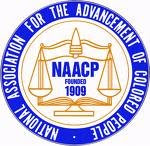In 1909, the National Association for the Advancement of Colored People, NAACP, began to fight the legal battle for social justice for African-Americans under the leadership of Charles Hamilton Houston and his student Thurgood Marshall.
In 1896, the U.S. Supreme Court decided upon the "seperate but equal" principle in Plessy v. Ferguson. However, in the 1930s, Nathan Margold conducted a study and found that under segregation, the facilities for blacks were seperate, but never equal. Margold argued that this violated the equality issue spoken about in Plessy's principle. For this reason, Margold proposed a series of lawsuits that would challenge the system. After Houston was appointed to be the first Special Counsel of the NAACP in 1935, he refined Margold's strategies and came up with a battle plan that would later become known as the "equalization strategy".
Houston's equalization strategy filed a series of lawsuits demanding that black facilities be made equal to those for white students. Houston hypothesized that the segregated states could not afford to maintain black schools that were equal to the reserved, white schools.
From 1935 to 1940, Houston argued and won several cases such as Murray v. Maryland(1936) and Gaines v. Canada(1938) with the equalization strategy.
Rightfully, Thurgood Marshall succeeded Houston as the NAACP Special Counsel and continued the legal campaign with cases such as Smith v. Allwright, Morgan v. Virginia, Shelley v. Kraemer, Sweatt v. Painter, and McLaurin v. Oklahoma. Although there were several historic cases, none were as big as Brown v. Board of Education of Topeka, Kansas. In Brown v. Board of Education, the Supreme Court decided that segregation in public education violated the Equal Protection Clause of the Fourteenth Amendment. This case served as a catalyst for the Civil Rights Movement of the 1950s and 60s, which led to the Civil Rights Act of 1964 and the Fair Housing Act of 1968.
Wednesday, November 5, 2008
Subscribe to:
Post Comments (Atom)

No comments:
Post a Comment